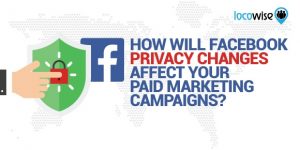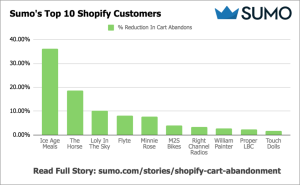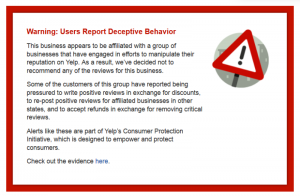— August 20, 2019
Social media and the way people use it is constantly transforming. Being aware of user habits and marketing shifts can help you develop a more effective social media strategy and ensure that you get the best value for your time and ad spending.
To know what’s about to happen in social media marketing, you need data that answers questions such as “Which tactics are used the most?”, “Which tactics are being planned?”, “Which tools are being developed?”, and so on.
For this reason, we at Awario created this infographic to provide an overview of the most recent social media marketing trends and shifts of 2019. The data on the list is broken down into five crucial categories: Social selling, Social listening, Influencer marketing, Ephemeral content, and Social advertising.
Social selling
Social media networks have been a go-to place for lead generation for quite some time already. More than that, social selling is a dominant sphere for marketers using social media: 61% of US marketers use social media for lead generation, 27% use it for monitoring conversations about their brand, and 12% do it for other reasons.
Statistics show that social selling is growing in 2019: 40% of organizations who responded to Hootsuite’s 2019 trends survey are planning to or have adopted social selling in their social media strategies this year.
Social Media Examiner asked 5700 marketers in their Industry Report 2019, and it turned out that Marketers spend an average of 4-6 hours a week on social media. At the same time, 51% of beginner social media marketers spend an average of 5 or fewer hours a week, while 61% of people who’ve had more than two years’ experience spend 6 or more hours.
Still, the subject remains unexplored for 53% of salespeople who responded that they need help in understanding social selling better.
Social listening
Social listening has multiple use cases: crisis management, increasing your brand awareness, social customer care, influencer marketing, etc. And the fact that 90% of social media users try to reach out to brands or retailers on social media illustrates that brands must make sure they engage with people who reach out to them online. And social listening makes this process less complicated.
The speed in this case is crucial, as 78% of people conveying complaints to brands via Twitter expect a response within an hour. When users don’t get the support as expected, 29% of people share their experience with their friends or family, while 15% complain about the company on social media.
That’s why social listening tools are gaining momentum, and the anticipated growth of social listening tools is by 31% in 2018-2019 compared to the previous years.
Influencer marketing
As Hootsuite’s 2019 trends survey states, 45% of organizations are planning to or have adopted influencer marketing in their digital marketing strategy.
Purchasing services from top-tier influencers is extremely expensive: according to WebFX, an influencer holding an account with 1m+ followers could charge more than $ 10,000 per post. Using niche micro-influencers is more cost-effective as micro-influencers are trusted and loyal to their audiences.
MarTech Series talked to 2,500 influencers about how much they charge per post, and it turned out that 97 % charge less than $ 500 per post, while 84% of those micro-influencers charge less than $ 250 per Instagram post.
Micro-influencers are 6.7 times more efficient per engagement than influencers with large followings.
Nationwide study shows that micro-influencers’ capability of driving consumer buying behavior increases, as now 82% of consumers are “highly likely” to follow a recommendation made by a micro-influencer.
Ephemeral content
Stories became a well-established trend in 2019. Block Party estimates that 4 out of 5 major brands are already using the Stories format.
As you probably know, stories are used across multiple social media networks. According to TechCrunch, the most popular now is WhatsApp Status with 450M daily users. Next goes Instagram Stories with 300M daily users. Snapchat has 191M daily users, and there are 220M daily users of stories that are spread between the Facebook app and Facebook Messenger with 150M and 70M daily visitors accordingly.
64% of respondents of Hootsuite’s 2019 trends survey said that they have either implemented Instagram Stories into their social strategy or plan to do so in the next 12 months.
Block Party reports that stories as a format also had a 15x growth rate compared to the rate of Feeds across major social media platforms. This is based on a comparison of the Top 3 Feed platforms (Facebook, Instagram, and Twitter) and the Top 3 Stories platforms (WhatsApp, Instagram, and Snapchat).
Social advertising
According to Hootsuite’s 2019 trends survey, 78% of marketers have either invested in social advertising or plan to do so in the next year. The same report states that 64% of marketers identify a decline in organic reach and the need to increase paid budgets. And 58% cite the volatility of Facebook’s algorithm changes as a problem.
Marketers are increasing social ad budgets (32% up in 2018 alone) and producing more ads than ever before. One of every four Facebook Pages now uses paid media, and Facebook already accounts for 23% of the total U.S. digital ad spending.
And speaking of ad spend, Facebook CTR costs have increased by 61%. The upturn is caused by the fact that the ad engagement with CTRs is growing.
You can check out the full infographic below or at Awario’s blog:
![5 Data-Driven Social Media Trends of 2019 [Infographic] 5 Data-Driven Social Media Trends of 2019 [Infographic]](https://www.onlinesalesguidetip.com/wp-content/uploads/2019/08/5-Data-Driven-Social-Media-Trends-of-2019-Infographic.png)
Digital & Social Articles on Business 2 Community
(34)








